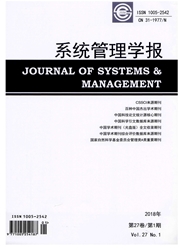

 中文摘要:
中文摘要:
利用模糊聚类分析及典型判别方法,将区域交通网络单元路段的状态划分为3类,考虑到各类交通状态下拥挤效应的异同,对各状态下的瞬时行程时间函数进行了标定。然后,对区域交通网络的状态进行了定义,应用半Markov链随机过程理论,分析了给定时间段内某区域交通网络各种状态的随机变化规律,计算了各种状态出现的极限概率。最后,结合各状态下网络单元路段的瞬时行程时间函数,给出了给定时间段内的区域交通网络行程时间估计方法。将模型估计得到的行程时间与实测行程时间进行了对比,利用t检验法对估计结果进行了检验,检验结果表明,在显著性水平α=0.05的条件下,估计平均行程时间与实测行程时间均值没有显著性差异。
 英文摘要:
英文摘要:
The states of traffic flow of the unit links in regional transport network are divided into three classes, using fuzzy clustering and the Canonical discriminant analysis. Considering the difference of traffic effect under different classes of states, we calibrate the instantaneous travel time function. We then define the state of the regional network based on Semi-Markov chain theory, analyze the law of state changing in regional transportation network, and calculate the limiting probability of the states. We also present the regional travel time estimating method. Estimates from the model are compared with the field-measured travel time with the paired t-test. The results show that at the significance level 0.05, there is no significance difference between the estimated travel time and the field-measured mean travel time.
 同期刊论文项目
同期刊论文项目
 同项目期刊论文
同项目期刊论文
 期刊信息
期刊信息
